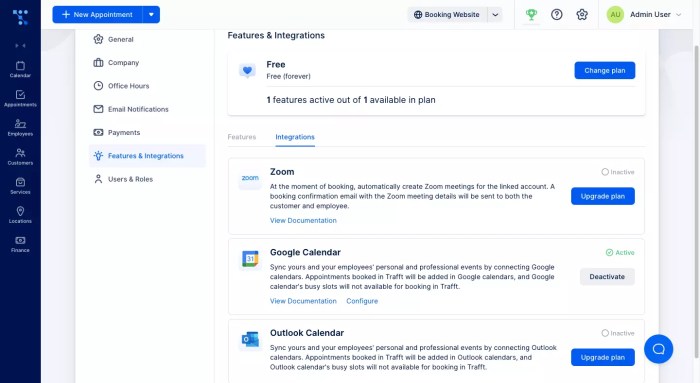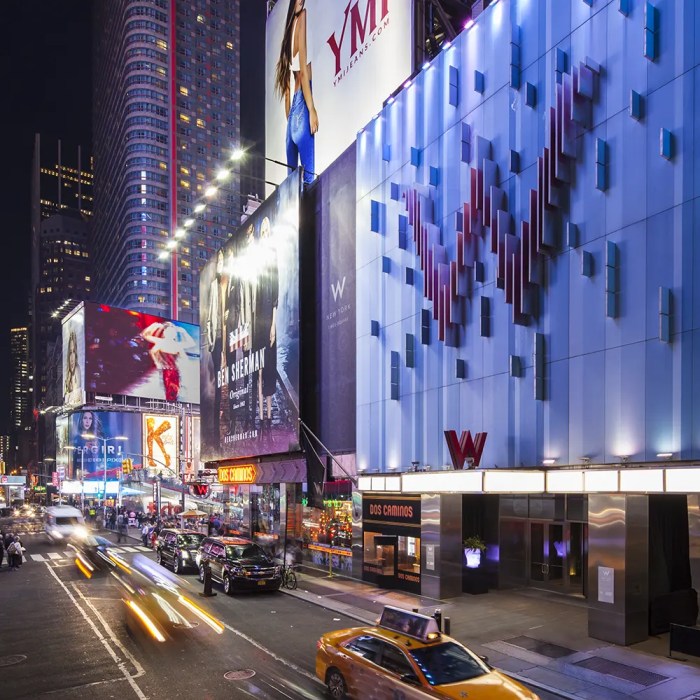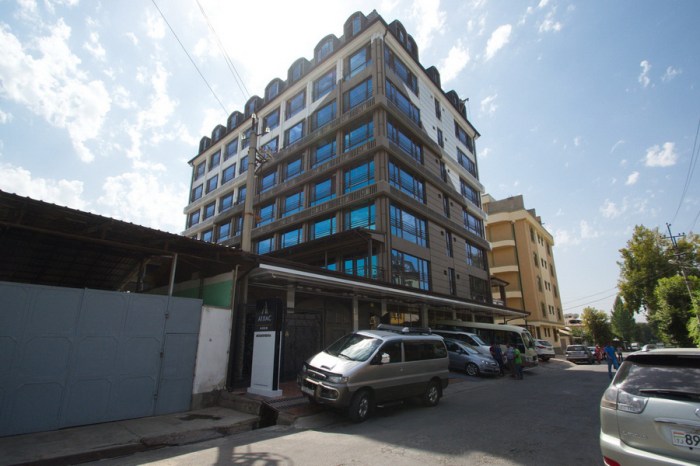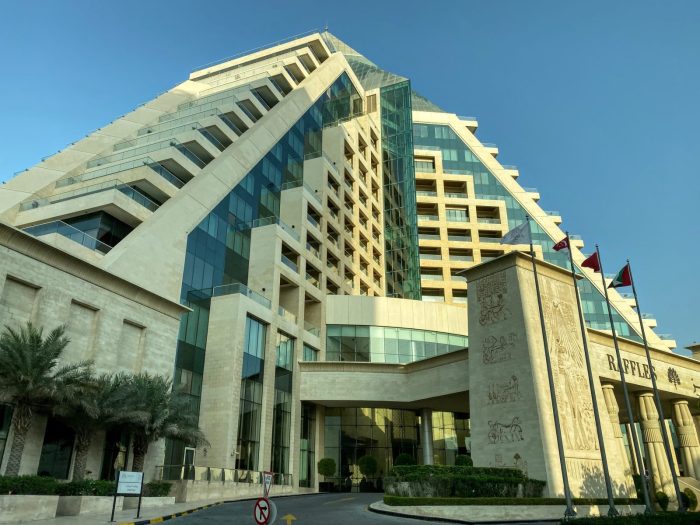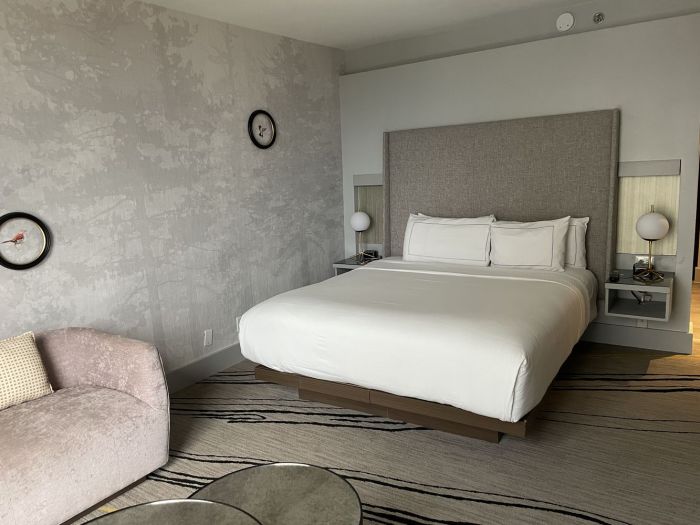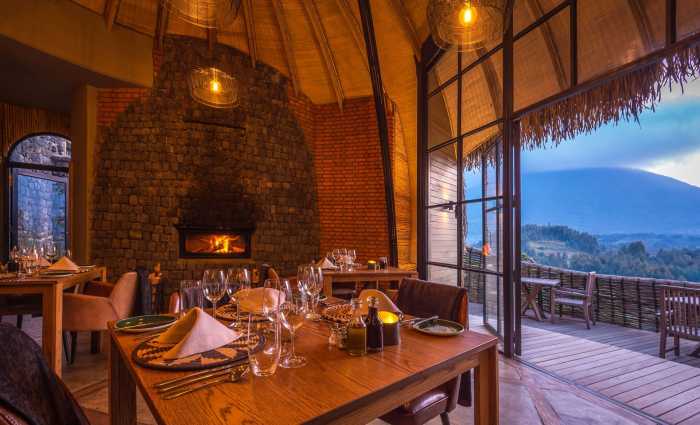Jungle Lodges An Eco-Adventure
Jungle lodges set the stage for an immersive exploration of nature’s grandeur. From rustic eco-lodges to luxurious retreats, these unique accommodations offer a captivating blend of comfort and immersion in the wild. This comprehensive overview delves into the world of jungle lodges, examining their history, amenities, locations, and the travelers they attract.
The diverse range of jungle lodges caters to a variety of tastes and budgets. Whether you’re seeking an eco-conscious experience, a luxurious getaway, or a budget-friendly adventure, a jungle lodge offers a unique perspective on the natural world. The detailed information provided in this report will assist you in selecting the perfect lodge to match your specific interests and travel style.
Introduction to Jungle Lodges
Jungle lodges offer a unique and immersive experience in the heart of the jungle, blending comfort and adventure. These accommodations cater to nature enthusiasts seeking a connection with the natural world while enjoying a level of convenience not typically found in remote wilderness locations. They have evolved significantly over time, reflecting both changing travel preferences and conservation efforts.
The concept of jungle lodges has developed from simple campsites to sophisticated retreats, catering to a diverse range of budgets and interests. Modern lodges incorporate sustainable practices and prioritize environmental preservation, contributing to the overall well-being of the ecosystems they inhabit. This commitment to sustainability is a key differentiator from other types of lodging.
Definition of Jungle Lodges
Jungle lodges are accommodations specifically designed for guests seeking immersive experiences in tropical or subtropical jungles. They are typically located in remote areas, providing a unique opportunity to observe wildlife and natural landscapes in their natural habitat. These lodges prioritize sustainability and conservation, often supporting local communities and minimizing their environmental footprint.
History and Evolution of Jungle Lodges
Early jungle lodges were often rudimentary structures built for researchers, explorers, and early eco-tourists. Over time, these accommodations have evolved to meet the demands of a growing market of adventure and nature enthusiasts, incorporating modern amenities and sustainable practices. The increasing emphasis on ecotourism has played a significant role in the development of more environmentally conscious and responsible jungle lodges.
Key Characteristics of Jungle Lodges
Jungle lodges stand apart from other types of lodging due to their specific location and amenities. Their remote settings often provide unparalleled opportunities for wildlife viewing and immersive nature experiences. The emphasis on sustainability and responsible tourism is another key characteristic, often involving partnerships with local communities and organizations focused on conservation.
Types of Jungle Lodges
Jungle lodges cater to a broad range of preferences and budgets, encompassing various types. These types include eco-lodges, luxury lodges, and budget-friendly lodges, each offering a distinct experience. These diverse types cater to different budgets, interests, and expectations of guests.
Comparison of Jungle Lodge Types
| Type | Location | Amenities | Target Audience |
|---|---|---|---|
| Eco-Lodges | Often in designated conservation areas or protected zones. | Emphasis on sustainability, locally sourced materials, and minimal environmental impact. Amenities may include nature trails, guided tours, and community interaction programs. | Eco-conscious travelers seeking a sustainable and immersive experience. |
| Luxury Lodges | May be located in pristine areas with exclusive access. | High-end accommodations with luxurious amenities, such as private balconies, gourmet dining, and spa services. Often include exceptional wildlife viewing opportunities. | High-end travelers seeking luxury and exclusive experiences. |
| Budget-Friendly Lodges | Often located in more accessible jungle areas. | Basic but comfortable accommodations, focusing on essential amenities. May offer shared facilities and affordable options. | Budget-conscious travelers seeking a unique experience without compromising on adventure. |
Amenities and Services Offered
Jungle lodges offer a unique blend of comfort and immersion in the natural environment. These accommodations typically prioritize a seamless experience that combines luxurious amenities with the thrill of exploring the surrounding wilderness. Beyond basic lodging, a wide array of activities and services contribute to a memorable stay.
The services and amenities at jungle lodges are carefully curated to enhance the guest experience while respecting the delicate ecosystem. From guided nature walks to delectable dining options, lodges strive to provide guests with opportunities to connect with the jungle’s beauty and wildlife. Sustainability is also a crucial element, with lodges often incorporating eco-friendly practices throughout their operations.
Typical Amenities
Jungle lodges often feature a range of amenities designed for both comfort and convenience. These may include comfortable rooms with ensuite bathrooms, potentially with private balconies or patios offering views of the surrounding jungle. Furthermore, some lodges might offer swimming pools, spas, or other recreational facilities, allowing guests to unwind after an active day exploring the wilderness. Many lodges also have well-equipped common areas, including libraries, game rooms, or relaxation zones.
Guided Tours and Activities
Guided tours are a key component of the jungle lodge experience. These tours typically focus on various activities, such as wildlife spotting, bird watching, nature walks, and cultural exploration, depending on the specific location. Experienced guides provide valuable insights into the local flora and fauna, ensuring guests have an enriching experience.
Table: Activities at Jungle Lodges
| Activity Type | Description | Example Locations |
|---|---|---|
| Wildlife Viewing | Opportunities to observe various animals in their natural habitat. | Amazon rainforest, African savanna |
| Nature Walks | Guided explorations of the surrounding jungle, focusing on flora and fauna. | Southeast Asian rainforests, South American cloud forests |
| Bird Watching | Specialized tours to observe various bird species. | Costa Rican rainforests, Malaysian rainforests |
| Cultural Immersion | Experiencing the local culture through workshops, villages, or traditions. | Borneo, the Amazon Basin |
Dining Experiences
Jungle lodges often feature diverse dining options. These can range from casual meals in communal dining areas to more formal dining experiences, sometimes featuring local cuisine. The food choices may include traditional dishes and international options, ensuring guests find meals appealing.
Table: Dining Experiences
| Dining Style | Description |
|---|---|
| Buffet | A wide variety of food options, suitable for communal dining. |
| Table Service | Formal dining experience with waiter service, offering more personalized attention. |
| Local Cuisine | Featuring dishes specific to the local region, providing an authentic culinary experience. |
| International Options | Offering a variety of international dishes to cater to diverse palates. |
Sustainable Practices
Sustainable practices are increasingly important in jungle lodge operations. These practices often include using locally sourced materials for construction, minimizing waste, and supporting local communities. Additionally, many lodges implement water conservation strategies and utilize renewable energy sources.
“Sustainability is not just about environmental protection, but also about supporting local communities and ensuring a positive impact on the ecosystem.”
A lodge’s commitment to sustainability can be a significant factor in choosing a lodge, showcasing their respect for the natural environment.
Location and Accessibility
Jungle lodges are often situated in remote, pristine areas of tropical regions, offering unparalleled opportunities for wildlife viewing and immersion in nature. Their locations are carefully chosen to balance access with the preservation of the surrounding ecosystem. This often necessitates specific transportation arrangements, and lodges adapt their facilities to cater to various traveler needs.
These lodges play a crucial role in sustainable tourism, ensuring the experience is both enriching and environmentally responsible. Their strategic positioning and accessible facilities contribute significantly to a memorable and immersive jungle adventure.
Geographical Regions
Jungle lodges are predominantly found in regions known for their dense rainforests, including the Amazon basin, Southeast Asia (e.g., Borneo, Sumatra), and parts of Africa. These regions boast diverse flora and fauna, making them ideal destinations for nature enthusiasts and wildlife photographers. The specific location within a region will influence accessibility and the types of wildlife visitors might encounter.
Transportation Options
Reaching jungle lodges typically involves a combination of air travel, followed by a transfer via riverboat, jeep, or hiking trails. Air travel provides the initial link to the region, with subsequent transportation options depending on the lodge’s location and infrastructure. For instance, lodges situated near navigable rivers may utilize riverboats for a scenic journey. Other lodges situated in more remote areas might require ground transport via 4×4 vehicles or well-maintained trails.
Accessibility Features
Jungle lodges prioritize the comfort and safety of their guests. Accessibility features are often tailored to accommodate guests with various needs. This might include ramps for wheelchair access, wider doorways, and provisions for guests with mobility limitations. Furthermore, some lodges assist guests with specific needs, ensuring a smooth and enjoyable experience for everyone. Staff are typically trained to provide support, and the lodges are designed with accessibility in mind.
Proximity to Attractions
The distance to natural attractions and wildlife viewing points varies greatly depending on the specific lodge. Some lodges are located directly within or near national parks, offering easy access to viewing platforms and trails. Others might be slightly further away but provide well-organized excursions to nearby wildlife sanctuaries or nature reserves. The proximity to these destinations influences the ease of accessing various attractions and observing diverse wildlife.
Table: Location and Travel Options
| Jungle Lodge | Location | Initial Travel (Air/Other) | Final Transfer | Distance to Wildlife Viewing |
|---|---|---|---|---|
| Amazon River Lodge | Amazon Basin, Peru | International Flight to Iquitos, followed by a riverboat | Riverboat | Short distance, viewing platforms directly on the river |
| Borneo Rainforest Lodge | Borneo, Malaysia | International Flight to Kota Kinabalu, followed by a domestic flight | Jeep transfer to the lodge | Moderate distance; excursions to nearby wildlife reserves |
| African Savanna Lodge | Tanzania, Africa | International Flight to Kilimanjaro | 4×4 vehicle transfer | Proximity to national parks; viewing points within the lodge’s grounds |
Target Audience and Pricing
Jungle lodges cater to a diverse range of travelers, from adventure seekers to nature enthusiasts. The target demographic often includes individuals and families seeking immersive experiences in pristine wilderness settings, appreciating comfort and unique cultural encounters. Many are drawn to the opportunity to disconnect from daily routines and reconnect with nature.
Understanding the price range is crucial for potential guests to select a lodge that aligns with their budget and expectations. The cost of a jungle lodge stay varies significantly based on several factors, including the level of luxury, amenities offered, location, and the duration of the stay.
Typical Traveler Profiles
The typical jungle lodge guest prioritizes immersion in nature and a unique experience. This can include those interested in wildlife viewing, birdwatching, hiking, or other outdoor activities. Families with children often seek lodges that offer family-friendly amenities and activities. Solo travelers and couples may be attracted to the opportunity to connect with nature and enjoy a tranquil getaway. Luxury travelers appreciate exceptional accommodations and bespoke experiences.
Price Range of Jungle Lodge Options
Jungle lodge pricing spans a wide spectrum. Budget-friendly lodges might offer basic accommodations and fewer amenities, often situated in more remote locations. Mid-range options provide a balance of comfort and services, situated in accessible locations. Luxury lodges offer high-end amenities, personalized services, and prime locations. The cost of a stay will typically increase with the duration of the stay, and peak season rates may be higher.
Pricing Structures for Various Lodge Types
The pricing structure for jungle lodges varies considerably based on the type of lodge. Luxury lodges, with their upscale amenities and personalized service, often command higher prices compared to budget-friendly options. Mid-range lodges strike a balance between comfort and affordability, providing a range of amenities without the premium pricing of luxury lodges.
Comparison of Pricing for Different Lodge Types
| Lodge Type | Accommodation | Activities | Amenities | Estimated Price (per night) |
|---|---|---|---|---|
| Budget-Friendly | Basic rooms, shared facilities | Limited guided tours, basic activities | Basic toiletries, limited dining options | $50-$150 |
| Mid-Range | Comfortable rooms, private bathrooms | Guided tours, nature walks, wildlife viewing | Wi-Fi, restaurant, basic spa services | $150-$350 |
| Luxury | Spacious suites, private balconies/terraces | Exclusive guided tours, personalized activities, and private guides | High-speed Wi-Fi, gourmet dining, spa, infinity pool, dedicated butler service | $350+ |
Factors Influencing the Cost of a Jungle Lodge Stay
Several factors contribute to the cost of a jungle lodge stay. Location plays a significant role, with lodges in prime wildlife viewing areas or close to popular attractions tending to be more expensive. The level of luxury and amenities offered is another key factor. Higher-end lodges include features like private plunge pools, spa services, and gourmet dining, impacting the overall cost. The duration of the stay often influences the price, with longer stays sometimes offering discounts per night. Peak season (e.g., dry season for wildlife viewing) rates will generally be higher than off-season rates.
Sustainability and Environmental Impact: Jungle Lodges
Jungle lodges, while offering unique experiences, carry a responsibility to minimize their impact on the delicate ecosystems they inhabit. A key consideration for these establishments is the implementation of sustainable practices that protect the environment and the local communities. This involves careful planning, resource management, and a commitment to minimizing waste and maximizing conservation efforts.
Sustainable Practices Employed by Jungle Lodges
Many jungle lodges prioritize responsible tourism and environmental stewardship. This often includes reducing their carbon footprint through energy-efficient appliances, utilizing renewable energy sources, and minimizing waste generation. Water conservation is also a key focus, often achieved through efficient water fixtures and rainwater harvesting systems. Moreover, lodges frequently partner with local communities, supporting their livelihoods and cultural preservation.
Positive Impacts of Jungle Lodges on the Environment
Jungle lodges, when operated sustainably, can contribute to the conservation of biodiversity and the protection of fragile ecosystems. Their presence can raise awareness about the importance of preserving these environments and provide financial support for local conservation efforts. They can also act as research hubs, gathering valuable data about the flora and fauna, contributing to scientific knowledge and understanding. Further, lodges can employ eco-guides, sharing insights into the environment and promoting responsible tourism amongst guests.
Negative Impacts of Jungle Lodges on the Environment
Unsustainable practices in jungle lodges can negatively impact the environment. Inadequate waste management, excessive water consumption, and the emission of greenhouse gases can harm local ecosystems. Uncontrolled development around the lodges can lead to habitat loss and disrupt the delicate balance of the natural world. A lack of proper management of visitor traffic can put pressure on fragile ecosystems and lead to the disturbance of local wildlife.
Role of Responsible Tourism in Maintaining Ecological Balance
Responsible tourism plays a crucial role in maintaining the ecological balance of jungle areas. By promoting eco-conscious practices, lodges encourage their guests to adopt a mindful approach to the environment. Educating visitors about local ecosystems, wildlife, and cultural sensitivities can foster a deeper appreciation for the environment. Responsible tourism, therefore, aims to balance the economic benefits of tourism with the preservation of the natural and cultural heritage.
Minimizing the Environmental Footprint of Jungle Lodges
Jungle lodges can minimize their environmental footprint by adopting several practices. Implementing water-saving technologies, utilizing renewable energy sources, and employing waste reduction strategies are crucial steps. Partnering with local communities and supporting sustainable initiatives within the region is essential. Moreover, encouraging guests to embrace responsible behaviors can contribute significantly to a lodge’s overall sustainability efforts.
Sustainable Practices of Various Jungle Lodges
| Jungle Lodge | Sustainable Practice |
|---|---|
| Amazon Rainforest Lodge | Utilizes solar panels for energy production and rainwater harvesting systems for water supply. |
| Borneo Jungle Resort | Employs eco-friendly construction materials and supports local conservation projects. |
| Costa Rica Ecolodge | Offers guided nature walks and promotes responsible wildlife viewing practices. |
| Indonesian Jungle Retreat | Works closely with local communities to ensure fair trade practices and support sustainable livelihoods. |
Illustrative Examples of Jungle Lodges
Jungle lodges offer a unique blend of luxury and immersion in nature. These accommodations provide a comfortable base for exploring the wonders of the rainforest, offering guests an unforgettable experience. Their design and amenities cater to diverse interests and budgets, making them a popular choice for nature enthusiasts and adventure seekers alike.
The Amazonian Oasis Lodge
This lodge is situated deep within the Peruvian Amazon rainforest, nestled amongst towering trees and vibrant foliage. The lodge prioritizes sustainability and minimal environmental impact, reflecting the importance of preserving the delicate ecosystem.
- Accommodation: The lodge features spacious, thatched-roof bungalows, each with private balconies offering panoramic views of the surrounding rainforest. The interiors are tastefully decorated with natural materials, maintaining a harmonious connection with the surrounding environment. Each bungalow includes a private bathroom with hot water and a comfortable seating area for relaxing after a day of exploration.
- Amenities: Guests can enjoy guided jungle treks, birdwatching excursions, and night safaris. The lodge also offers a variety of activities, including kayaking on the Amazon River, fishing trips, and cultural experiences with local indigenous communities. Dining options include both formal meals and casual snacks throughout the day. A well-stocked library provides opportunities for relaxation.
- Location & Accessibility: The lodge is accessible by a combination of riverboat and 4×4 vehicle, with the journey itself being a unique part of the experience. The journey offers the opportunity to observe the diverse wildlife and the beauty of the Amazon rainforest.
- Target Audience & Pricing: This lodge caters to nature lovers and adventure seekers, with a focus on luxury and a premium pricing structure. Prices reflect the high-quality accommodations, personalized service, and extensive activities offered.
- Surrounding Environment: The lodge is surrounded by a vast array of flora and fauna. Visitors can observe monkeys, sloths, macaws, jaguars, caimans, and a myriad of colorful birds. The lush canopy provides a spectacular backdrop for wildlife observation. The diverse plant life is equally remarkable, featuring a plethora of exotic flowers, orchids, and medicinal plants.
The Himalayan Retreat
Nestled high in the Himalayas, this lodge offers breathtaking views of snow-capped peaks and vibrant valleys. Its remote location provides a sense of seclusion and tranquility, ideal for those seeking a spiritual retreat.
- Accommodation: The lodge features traditional-style rooms with stunning mountain views. The rooms are meticulously crafted from local materials, with comfortable furnishings that maintain the lodge’s unique aesthetic. Private balconies provide excellent opportunities for enjoying the panoramic views.
- Amenities: The lodge offers guided trekking tours through the breathtaking Himalayan trails, allowing visitors to explore the rich culture and stunning landscapes. Yoga and meditation sessions are available to promote a sense of well-being and tranquility. A local chef prepares traditional Himalayan cuisine.
- Location & Accessibility: The lodge is accessible via a challenging but rewarding journey, requiring a combination of trekking and transportation by mule. The unique accessibility enhances the overall adventure.
- Target Audience & Pricing: This lodge targets adventure seekers, nature enthusiasts, and those seeking a spiritual retreat. Pricing reflects the unique location, the demanding accessibility, and the luxurious amenities offered.
- Surrounding Environment: The region is known for its abundant wildlife, including yaks, snow leopards, and various bird species. The vibrant vegetation includes rhododendrons, oaks, and pine trees, creating a stunning landscape. The lodge is located near areas rich in cultural significance, allowing visitors to experience the local traditions.
The Borneo Rainforest Sanctuary
Located in the heart of the Borneo rainforest, this lodge provides a unique experience for observing the incredible biodiversity of this region. The lodge prioritizes conservation and sustainability, working closely with local communities.
- Accommodation: The lodge features eco-friendly rooms built with sustainable materials. The design integrates seamlessly with the natural surroundings, offering guests a sense of connection with nature. Each room features stunning views of the rainforest canopy.
- Amenities: Activities include guided jungle walks, canopy tours, and river cruises. The lodge supports local communities by providing employment opportunities and supporting local initiatives.
- Location & Accessibility: The lodge is accessible by a combination of air and water transportation. The accessibility offers a seamless transition into the heart of the rainforest.
- Target Audience & Pricing: The lodge caters to families, nature photographers, and those interested in conservation efforts. Pricing reflects the lodge’s commitment to sustainability and the unique experiences offered.
- Surrounding Environment: Borneo is renowned for its diverse wildlife, including orangutans, proboscis monkeys, and various bird species. The dense rainforest canopy provides a home for countless species, including rare and endangered ones. The lodge’s location offers an immersive experience into the heart of this precious ecosystem.
Unique Experiences and Activities
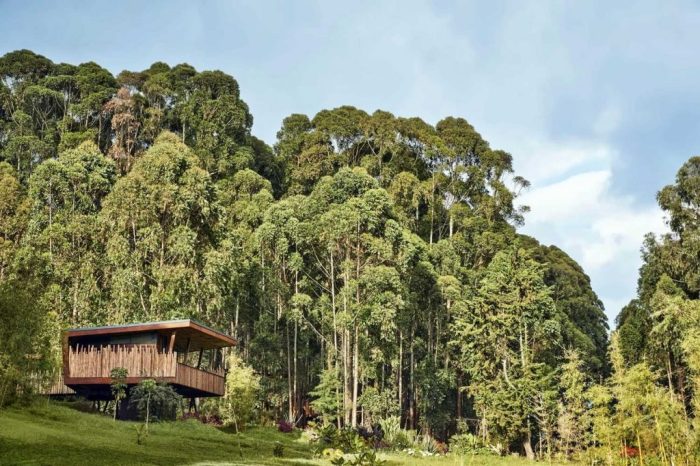
Source: privateupgrades.com
Jungle lodges offer a wealth of opportunities to immerse oneself in the natural world and encounter the fascinating biodiversity of the surrounding environment. These experiences extend beyond simple wildlife viewing, encompassing cultural immersion, thrilling adventures, and opportunities for personal growth and connection with nature. The carefully curated activities provide guests with memorable encounters that respect the delicate ecosystem and the animals they observe.
Wildlife Viewing Opportunities
Jungle lodges often boast prime locations for observing a variety of wildlife. These locations are strategically chosen for optimal viewing opportunities and the preservation of natural habitats. Dedicated guides, equipped with specialized knowledge and experience, provide insights into the behaviour and ecology of the local fauna. Understanding the habits and needs of the animals is paramount to responsible wildlife viewing.
- Guided Nature Walks: These walks, led by knowledgeable guides, provide a deeper understanding of the local flora and fauna. Guests can learn about plant identification, medicinal uses of plants, and the intricate web of life within the jungle. Guided nature walks can range from strolls through lush undergrowth to more challenging treks into the deeper forests.
- Birdwatching Safaris: Many lodges offer birdwatching safaris, featuring expert guides familiar with the local avifauna. Guests can learn about different species, their unique characteristics, and the habitats they prefer. Birdwatching often involves early mornings and late afternoons, when birds are most active.
- Elephant Encounters (Ethically): Ethical elephant encounters are increasingly popular. These experiences focus on respecting the animals’ natural behaviours and avoiding practices that could negatively impact their welfare. Lodges often partner with organizations that prioritize responsible tourism.
- Night Drives: Night drives offer unique perspectives on the nocturnal wildlife, which often includes different species of animals that are not as visible during the day. Experienced guides provide illumination and ensure safe and responsible viewing. Special precautions are taken to avoid disturbing the animals’ natural behaviours.
Responsible Wildlife Viewing Practices
Maintaining a respectful distance from wildlife is crucial for their well-being. Disturbing or approaching animals can disrupt their natural routines and negatively affect their health. Lodges emphasize the importance of responsible wildlife viewing through their training programs and strict guidelines. Active participation in these practices ensures the longevity of wildlife viewing opportunities.
“Responsible wildlife viewing emphasizes the importance of observing animals from a safe distance, avoiding feeding them, and respecting their natural environment.”
Unique Activities
Beyond wildlife viewing, jungle lodges offer a range of unique activities that enhance the overall experience.
- Cultural Experiences: Immersive cultural experiences provide insight into the local communities and traditions. These experiences can involve learning about local crafts, attending cultural performances, or interacting with community members. The interaction with locals offers a deeper understanding of the rich heritage of the area.
- Jungle Treks: Jungle treks offer an adventurous opportunity to explore the dense jungle. Expert guides provide assistance and safety protocols, ensuring a safe and enjoyable experience. The treks provide a unique chance to encounter remote and hidden parts of the jungle.
- Nature Photography Workshops: These workshops guide capturing stunning images of wildlife and the natural landscape. Experienced photographers offer valuable tips and techniques to enhance the photography skills of participants. The workshops offer valuable learning opportunities for both beginner and advanced photographers.
Variety of Activities Offered at Different Lodges
| Jungle Lodge | Wildlife Viewing | Cultural Experiences | Unique Activities |
|---|---|---|---|
| Amazon River Lodge | Guided nature walks, birdwatching, night drives | Visits to local villages, traditional dances | Canoeing, fishing expeditions |
| Borneo Rainforest Lodge | Elephant encounters (ethical), orangutan observation | Learning about indigenous cultures, craft workshops | Jungle treks, canopy tours |
| African Savanna Lodge | Game drives, birdwatching, guided nature walks | Visiting local markets, cultural performances | Hot air balloon safaris, horseback riding |
Booking and Planning
Securing a stay at a jungle lodge requires careful planning and attention to detail. The unique nature of these accommodations necessitates a structured approach to booking, including consideration of travel documents, permits, and lodge-specific policies. This section provides a comprehensive overview of the booking process and essential planning considerations.
Jungle lodge bookings often involve a complex interplay of factors, from confirming availability to understanding the specific requirements of the region. Thorough preparation ensures a smooth and enjoyable experience for visitors.
Booking Process
The booking process typically begins with identifying desired lodges and dates. This is often facilitated through online platforms or direct contact with the lodge. Confirming availability and requesting specific room types, if applicable, are crucial initial steps. Following the lodge’s booking policy and payment procedures is essential. A confirmation email with details like booking reference, payment confirmation, and any special instructions should be carefully reviewed.
Trip Planning Tips
Careful trip planning is vital for a successful jungle lodge experience. Researching the local climate and packing appropriate clothing and gear is essential. Understanding local customs and etiquette enhances the interaction with the environment and the community. Planning activities and excursions in advance ensures optimal utilization of time. Also, securing travel insurance is strongly recommended.
Travel Documents and Permits
Specific travel documents and permits may be required for accessing jungle lodge areas. These requirements vary based on the location and the lodge’s specific jurisdiction. It is imperative to verify the necessary documentation well in advance of the trip. Checking visa requirements, if applicable, and obtaining any necessary permits should be done early in the planning phase. Contacting the lodge directly for precise information is advised.
Choosing a Lodge
Several factors influence the choice of a jungle lodge. Considerations include the lodge’s location, amenities, and the specific activities offered. The lodge’s sustainability practices and commitment to environmental conservation should also be taken into account. Budget and the target audience (solo travelers, families, or couples) will influence the decision. Evaluating reviews and testimonials from past guests is a helpful approach to assess the lodge’s reputation.
Essential Booking Information
| Information | Details |
|---|---|
| Traveler Details | Full Names, Contact Information, Number of Guests, Dates of Stay |
| Accommodation Preferences | Specific room types (if applicable), desired amenities, special requests |
| Travel Details | Arrival/Departure Airport/Transportation details, flight schedule, any specific transportation needs |
| Contact Information | Emergency contact details, email address, and preferred contact method |
| Payment Information | Method of payment, amount, and due date. |
| Special Requirements | Dietary restrictions, accessibility needs, or any other special requests. |
Last Word
In conclusion, jungle lodges offer a compelling alternative to traditional accommodations, providing a unique blend of luxury and nature. The insights into their diverse types, amenities, locations, and target audiences provide a comprehensive understanding of the experience. Ultimately, choosing a jungle lodge allows for an enriching connection with the environment, fostering a deeper appreciation for the beauty and biodiversity of the world’s jungles.
